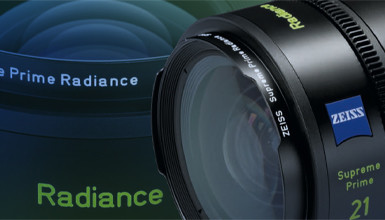Recently, I had the opportunity to put this to a test. I wanted to really evaluate the ability to intercut a prime and zoom from the same line of lenses, and I choose to use ZEISS Supreme Primes and ZEISS Cinema Zoom Lenses. I decided to shoot a combination of skin tones and resolution charts in order to analyze the look, feel, resolution, and sharpness of the lenses.
For these scenes, I used the 29mm T1.5, 35mm T1.5, 50mm T1.5, 65mm T1.5, and 100mm T1.5 Supreme Primes. For zooms, I used the ZEISS Cinema Zoom 28-80mm T2.9, and 70-200mm T2.9. All shots were kept at a consistent T-stop of T2.9 and shot on the RED MONSTRO at 4K.
Both lenses captured an organic, natural skin tone. I also really noticed the soft highlight roll-off. The bokeh matched and intercut perfectly, and the sharpness was very comparable. The completed project reveals the matching look, feel, and sharpness of the ZEISS Supreme Zooms and the ZEISS Cinema Zooms. They're great options for a lens package for a full format or Super 35mm project where both primes and zooms are necessary. Watch the final video to see how all the lenses performed together.
Editor's Note: At 1:40 the caption should read ZEISS Supreme Zoom 28-80mm T2.9 (at 29mm).



















AbelCine encourages comments on our blog posts, as long as they are relevant and respectful in tone. To further professional dialog, we strongly encourage the use of real names. We reserve the right to remove any comments that violate our comment policy.
AbelCine publishes this blog as a free educational resource, and anyone may read the discussions posted here. However, if you want to join the conversation, please log in or register on our site.
We use Disqus to manage comments on this blog. If you already have a Disqus account registered under the same email as your AbelCine account, you will automatically be logged in when you sign in to our site. If not, please create a free account with Disqus using the same email as your AbelCine account.